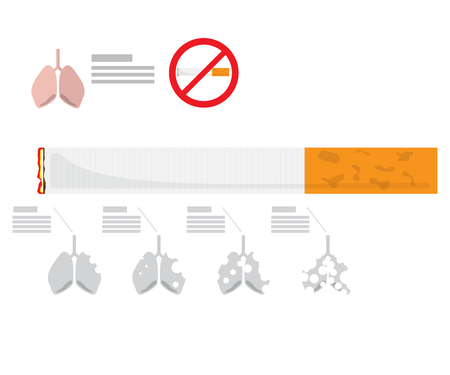Understanding ACL Reconstruction Surgery
What Is the ACL and Why Does It Matter?
The anterior cruciate ligament (ACL) is one of the main ligaments inside your knee. It connects the thigh bone (femur) to the shin bone (tibia), helping to keep your knee stable when you walk, run, or jump. ACL injuries are common in sports like basketball, soccer, football, and skiing, but they can happen to anyone due to falls or sudden changes in direction.
Common Causes of ACL Injuries
- Sudden stops or changes in direction
- Pivoting with a planted foot
- Landing awkwardly from a jump
- Direct blows to the knee
Types of ACL Injuries
| Type of Injury | Description |
|---|---|
| Partial Tear | The ACL is stretched or slightly torn but still partially intact. |
| Complete Tear | The ACL is completely torn into two pieces. |
Surgical Options for ACL Reconstruction
If your doctor recommends surgery, it usually means your ACL is severely torn and unlikely to heal on its own. In the United States, two main types of grafts are commonly used for reconstruction:
| Graft Type | Description |
|---|---|
| Autograft | Tissue taken from your own body, usually from the patellar tendon, hamstring tendon, or quadriceps tendon. |
| Allograft | Tissue donated from another person (a cadaver donor). |
Surgery Overview
- Surgery is usually performed arthroscopically (minimally invasive)
- The torn ACL is replaced with new tissue (graft)
- Surgery takes about 1–2 hours under anesthesia
Key Considerations Before Surgery
If you are preparing for ACL reconstruction in the U.S., here are some important things to keep in mind:
- Your age, activity level, and overall health can affect recovery and treatment choices.
- You may need pre-surgery physical therapy (“prehab”) to reduce swelling and improve knee motion.
- Discuss pain management options and expectations for post-surgery rehab with your healthcare team.
2. Phases of Rehabilitation: Timeline and Milestones
Understanding the Road to Recovery
Rehabilitation after ACL reconstruction is a step-by-step process. Each phase has specific goals, exercises, and milestones to help you safely regain strength, mobility, and confidence. Here’s a detailed breakdown of what to expect during each stage:
Phases of ACL Rehab: Overview Table
| Phase | Timeline | Main Goals | Key Activities | Milestones |
|---|---|---|---|---|
| Phase 1: Early Recovery | 0–2 weeks post-op | Protect knee, reduce swelling, restore motion | Ice, elevation, gentle range of motion (ROM) exercises, quad sets, heel slides | Knee extension nearly straight; swelling under control; able to contract thigh muscle (quad) |
| Phase 2: Progressive Weight-Bearing | 2–6 weeks post-op | Regain normal walking pattern, improve ROM and strength | Walking with crutches (progressing to no crutches), stationary bike, mini squats, leg raises | Able to walk without limp; knee bends at least 90°–120°; minimal pain with daily activities |
| Phase 3: Strengthening and Functional Training | 6–12 weeks post-op | Build muscle strength, balance, and stability; begin functional movement training | Leg presses, lunges, step-ups, balance drills, light jogging (if cleared by your PT) | No swelling after exercise; full knee ROM; improved strength compared to non-surgical leg |
| Phase 4: Advanced Activity & Return to Sport Prep | 3–6 months post-op (or longer) | Prepare for higher-level activities; sport-specific drills; prevent re-injury | Plyometrics, agility drills, cutting/pivoting practice (with supervision), return-to-sport testing | Pass return-to-play tests; confidence in knee function during challenging movements |
The Details of Each Phase
Phase 1: Early Recovery (0–2 Weeks)
- Main Focus: Control swelling and pain. Start moving the knee gently.
- Your Role: Use ice packs regularly. Keep your leg elevated when possible. Do ankle pumps and gentle straightening/bending exercises as instructed.
- Caution: Avoid putting too much weight on your surgical leg until your doctor or physical therapist gives you the green light.
- Milestone: Your knee should be able to straighten out fully with minimal pain or swelling.
Phase 2: Progressive Weight-Bearing (2–6 Weeks)
- Main Focus: Start walking normally again and continue improving range of motion.
- Your Role: Gradually put more weight on your surgical leg as guided by your therapist. Practice walking without limping.
- Caution: Don’t rush off the crutches—take it step by step!
- Milestone: You should be able to walk without assistive devices and bend your knee at least 90–120 degrees.
Phase 3: Strengthening and Functional Training (6–12 Weeks)
- Main Focus: Build up muscle strength around the knee and work on balance skills.
- Your Role: Follow your physical therapist’s plan for strengthening exercises like lunges or mini-squats. Start functional training such as stepping and balancing tasks.
- Caution: Listen to your body—don’t push through significant pain or swelling.
- Milestone: No swelling after activity; improved strength in the surgical leg so it matches your other side.
Phase 4: Advanced Activity & Return to Sport Prep (3–6+ Months)
- Main Focus: Get ready for demanding activities or sports. Prevent future injuries by practicing safe movement patterns.
- Your Role: Work closely with your physical therapist on jumping, cutting, pivoting drills if you’re planning to return to sports like basketball or soccer.
- Caution: Always complete “return-to-play” testing before going back to high-risk activities—even if you feel ready!
- Milestone: Pass all return-to-sport assessments and feel confident using your knee during challenging movements.
Please Note:
The exact timeline can vary based on your age, overall health, type of graft used in surgery, and individual progress. Always follow guidance from your orthopedic surgeon and physical therapist—they’ll tailor the plan just for you!

3. Evidence-Based Rehabilitation Protocols
Rehabilitation after ACL reconstruction in the U.S. follows evidence-based protocols that are continually updated to reflect current research and clinical best practices. The goal is to create a personalized rehab plan that considers your specific needs, activity level, and progress. Here’s what you can expect during your recovery journey:
Phased Approach to Rehabilitation
| Phase | Timeline (Approx.) | Main Goals |
|---|---|---|
| Phase 1: Immediate Post-Op | Week 0-2 | Pain control, swelling reduction, gentle range of motion, protect graft |
| Phase 2: Early Rehab | Week 2-6 | Improve knee movement, begin weight-bearing, start basic strengthening |
| Phase 3: Strengthening | Week 6-12 | Advance strength, balance training, increase functional activities |
| Phase 4: Advanced Training | Month 3-6+ | Sport-specific drills, plyometrics, prepare for return to play/work |
Individualized Care and Goal Setting
No two patients are exactly alike. U.S. rehab protocols emphasize individualized care—your physical therapist will assess your pain levels, mobility, strength, and goals at every visit. Together, you’ll set short-term and long-term goals tailored to your lifestyle, whether you want to get back to sports or just enjoy daily activities without pain.
Examples of Common Physical Therapy Interventions:
- Range of Motion Exercises: Gentle stretching to restore knee movement and prevent stiffness.
- Strength Training: Focused exercises for the quadriceps, hamstrings, glutes, and core muscles.
- Balance and Proprioception: Training to help you regain stability and confidence in your knee.
- Functional Drills: Practicing movements like squats, lunges, and steps that mimic daily life or sports activities.
- Pain and Swelling Management: Ice therapy, compression wraps, and sometimes electrical stimulation may be used.
The Role of Communication with Your Rehab Team
Your active participation is crucial for success. Regularly update your physical therapist about any new symptoms or concerns. In the U.S., open communication is encouraged so your rehab plan can be adjusted as needed—helping you stay on track toward a safe and effective recovery.
4. Patient Expectations and Return to Activity
Understanding Realistic Timelines
Recovering from ACL reconstruction surgery is a journey that takes time and patience. Many people are eager to get back to their normal activities, but it’s important to have realistic expectations. The timeline for recovery can vary depending on your age, activity level, type of surgery, and commitment to rehab. Here’s a general overview of what you might expect:
| Phase | Timeframe | Main Goals |
|---|---|---|
| Early Recovery | Weeks 1-4 | Control pain and swelling, regain knee movement, start gentle strengthening |
| Strengthening Phase | Weeks 4-12 | Improve muscle strength, increase balance, progress walking without limping |
| Advanced Rehab | Months 3-6 | Regain full knee motion, build endurance, start jogging and agility exercises |
| Return to Activity/Sports | 6-12 months or longer | Resume sports, high-impact activities after passing functional tests and with doctor clearance |
Emotional Ups and Downs During Recovery
The road to full recovery isn’t just physical—it’s emotional too. It’s completely normal to feel frustrated or impatient at times. Some days will be better than others. Staying motivated can be tough, especially if progress seems slow or if you hit setbacks. Talking with your healthcare team, family, or others who’ve gone through ACL rehab can help you stay positive.
Pain: What’s Normal?
Pain and discomfort are part of the healing process—especially in the early weeks. You may notice soreness after physical therapy sessions or when trying new exercises. Over time, pain should decrease as your knee gets stronger and more flexible. Always let your physical therapist know if you have sharp pain, swelling that doesn’t improve, or anything that feels “off.” These could be signs that your rehab plan needs adjustment.
Mobility: Getting Around Again
You’ll probably use crutches or a brace at first. As you progress, you’ll work toward walking normally without support. Regaining full motion in your knee is a major milestone. Don’t rush—each step prepares your body for the next level of activity.
Returning to Sports and Physical Activities
If you’re an athlete or just love being active, getting back in the game is likely a top priority. However, returning too soon increases the risk of reinjury. Most people need at least 6-9 months before safely returning to sports like basketball, soccer, or football—and sometimes up to a year. Your surgeon and physical therapist will guide you based on how well your knee has healed and how strong it is compared to your other leg.
| Activity Level | When You Might Return* | Notes/Considerations |
|---|---|---|
| Daily Activities (walking, driving) | 2-6 weeks | No limping; able to control the knee well; check with your PT/doctor about driving safety. |
| Low-Impact Exercise (stationary bike, swimming) | 2-3 months | No pain; good range of motion; cleared by your therapist. |
| Running/Jogging | 3-6 months | Knee strength at least 80% of uninjured leg; no swelling after exercise. |
| Pivoting/Contact Sports (soccer, basketball) | 6-12 months+ | Must pass functional tests; doctor clearance required. |
*Timelines are general estimates—your recovery may differ.
Going Back to Work or School
Your return depends on your job or school activities. If your job is mostly sitting at a desk, you might go back within 2-3 weeks. Jobs that require standing, lifting, or lots of walking may take longer—sometimes several months. Talk with your healthcare team about any special accommodations you might need during recovery.
Your Roadmap for Success: Tips Along the Way
- Communicate openly: Share concerns and questions with your care team—they’re here to help!
- Pace yourself: Celebrate small wins; don’t compare yourself with others.
- Mental health matters: Reach out if you’re feeling down—many people experience emotional ups and downs during recovery.
- Your effort counts: Sticking to your rehab program gives you the best chance for full recovery and getting back to what you love.
5. Common Challenges, Setbacks, and Tips for Success
Typical Obstacles During ACL Rehabilitation
Recovering from ACL reconstruction surgery can be tough, and most patients face a few common bumps along the road. Knowing what to expect helps you stay positive and proactive throughout your journey.
| Challenge | Description | How to Address |
|---|---|---|
| Pain and Swelling | Discomfort is normal, especially during the first few weeks post-surgery. | Use ice packs, elevate your leg, and follow your doctor’s pain management plan. |
| Lack of Knee Mobility | Tightness or stiffness can slow progress in regaining full range of motion. | Stick with daily stretching exercises as prescribed by your physical therapist. |
| Muscle Weakness | Your thigh (quadriceps) and hamstring muscles may feel weak after surgery. | Do targeted strengthening exercises consistently, even on days when motivation is low. |
| Mental Fatigue & Frustration | The process can feel slow, leading to discouragement or anxiety about returning to activities. | Set small goals, celebrate milestones, and talk openly with your rehab team about concerns. |
| Fear of Re-Injury | It’s common to worry about hurting your knee again during rehab or sports. | Follow progression guidelines closely and communicate any fears to your therapist or surgeon. |
Strategies for Overcoming Plateaus in Recovery
Everyone hits a plateau at some point—when progress stalls despite hard work. Here’s how to keep moving forward:
- Switch Up Your Routine: Ask your physical therapist for new exercises to challenge your muscles differently.
- Track Your Progress: Keep a journal or use an app to record what you’re doing each week. Sometimes you’re improving more than you realize!
- Focus on Form: Quality matters more than quantity. Make sure you’re doing each exercise correctly, not just quickly.
- Add Low-Impact Cardio: Activities like swimming or cycling (as cleared by your provider) can boost circulation and overall fitness without straining your knee.
- Stay Consistent: Even on tough days, stick with your rehab schedule—the little things add up over time.
Actionable Tips for Staying on Track & Avoiding Re-Injury
Create a Support System
Your friends, family, and rehab team are there to help. Don’t hesitate to lean on them for encouragement or accountability.
Listen to Your Body
If you feel sharp pain or increased swelling after an activity, it’s okay to scale back. Communicate changes with your medical team so they can adjust your program if needed.
Avoid Risky Movements Early On
No twisting, pivoting, or high-impact sports until your surgeon and therapist give you the green light. Returning too soon raises the risk of re-injury.
Stay Patient—Recovery Takes Time!
The average return-to-sport timeline is 6–12 months after ACL reconstruction. Everyone heals at their own pace; focus on steady progress rather than rushing ahead.
Your ACL Recovery Checklist:
- Keep up with all follow-up appointments
- Do home exercises as recommended by your PT
- Icing and elevating as needed for swelling control
- Easing back into activities as cleared by your care team
- Staying positive and celebrating every milestone—big or small!
If you ever feel stuck or unsure about your progress, reach out to your healthcare providers—theyre here to guide you every step of the way.


